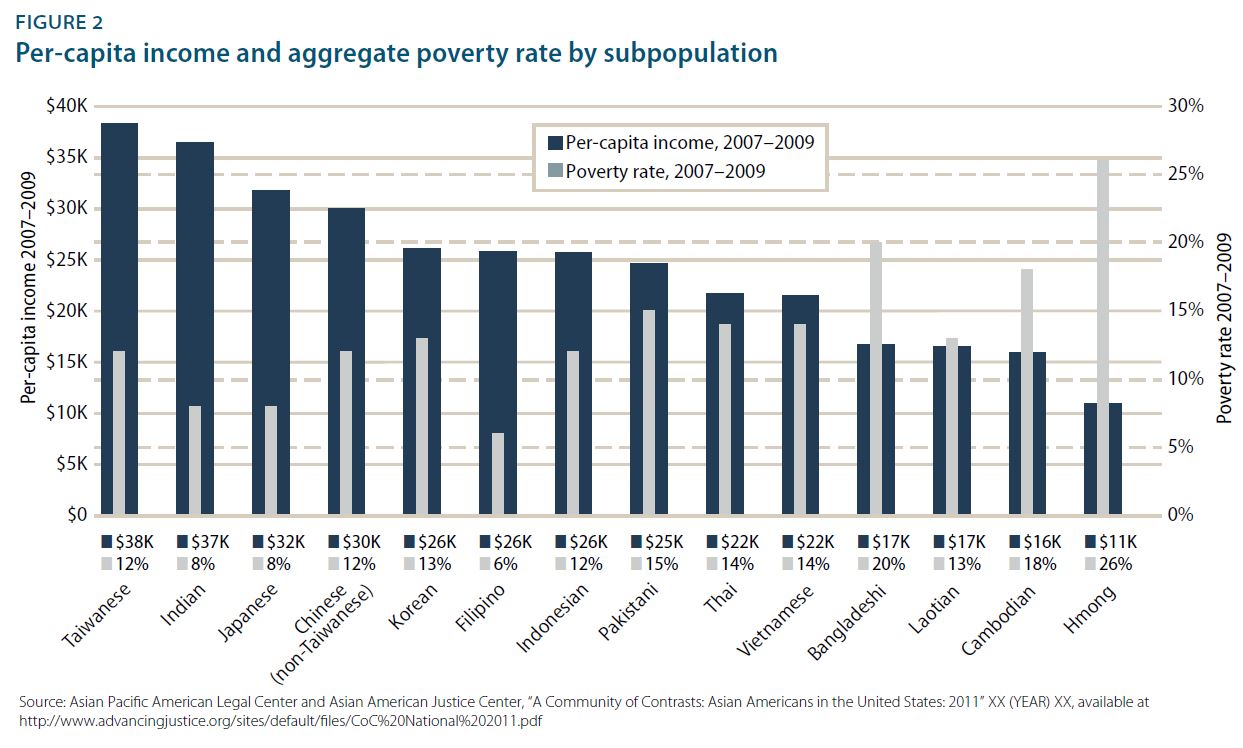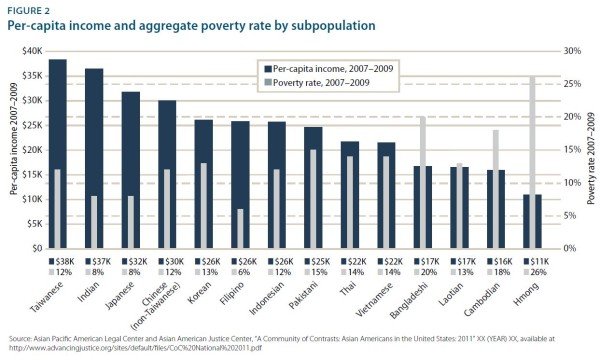When this report from Nielsen came out a few months ago about how Asian Americans are a wealthy sophisticated group with above average household income that marketers should target, it seemed to me that the people who compiled that report did not look at the Asian American data in detail. Didn’t the authors of that report realize that one reason that Asian American households have more income is that they tend to have more wage earners than the American average? “Reading between the Data: The Incomplete Story of Asians, Native Hawaiians, and Pacific Islanders, ” a recent study by the Center for American Progress on Asian American income and diversity, fills in many of the information holes about the economic and societal positions of specific Asian ethnic groups, disaggregating the broad “Asian American” data set into component groups and making policy recommendations.
One of the first things that stands out in the report is that rather than being a uniformly wealthy minority, the Asian American economic experience varies highly from one ethnic subgroup or another. As you can see from the graph above, average income for Taiwanese Americans is $38,312 between 2007 and 2009, compared to $10, 949 for Hmong Americans and $27,100 for the United States at large. Indian Americans have a poverty rate below 8% while Hmong have a poverty rate above 25%.
Asian American households are more likely they any other group to have more than three working individuals. My own household has three workers – four when The Daughter is home for the summer and working. This fact tends to dilute the impact of higher income per household, which is why a better statistic to use is per capita income instead of household income. Asian Americans unemployment at 5.3% was lower than the 5.6% for whites (data from November 2013), but unemployment for Asian Americans with at least a college degree is 6.5% compared to whites with a college degree 4.3% (data from 2011). Asian Americans also have the highest long term unemployment of any group. These unemployment numbers are interesting – I have no idea why this happens. Any speculation from our readers?
The study recommends a number of actions to continue disaggregating Asian American data, including conducting surveys of Asian American in the most common languages and over sampling populations likely to under report. It also points out that “Asian American” is a political construct, and says that many Asian Americans don’t think of themselves as Asian Americans but as “Filipino American” as an example or their specific ethnic groups. They are not the first to note this tendency, and one wonders how useful this construct will continue to be.
Note that 8Asians has previously done a series on disaggregated data for a number of specific Asian ethnic groups:
- Excited
- Fascinated
- Amused
- Disgusted
- Sad
- Angry









